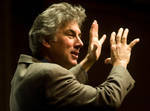Author and Historian
In Full View: The True Story of Lewis and Clark
Rex Ziak uncovered a missing chapter of early American history that resulted in the founding of a new American National Park.
Lewis & Clark arrival at the Pacific Ocean had confused historians for nearly two hundred years. Some scholars overlooked what took place, while others misinterpreted the events. Rex accidentally stumbled upon this gap in our history and became intrigued,.
With no formal higher education but ample passion and curiosity he dug into the Lewis and Clark journals, closely examining every work, studying their maps and repeatedly retracing sections of their route on foot. He even calculated the tides and phases of the moon to better understand the exact conditions the explorers endured in November of 1805. Finally, after more than six years of research, Ziak published his discoveries, which contradicted everything we had believed about Lewis and Clark’s arrival at the Pacific.
At first, scholars challenged Ziak’s new interpretation, but after further investigation and re-examination of the journals, they acknowledged his breakthrough findings.
The Oregon Historical Society has named Rex a Distinguished Historian on three separate occasions, more than any other historian. And in 2004 the Federal government honored his groundbreaking research by purchasing the sites he had identified, creating the Lewis & Clark Historical Park – American’s newest national park.
Rex Ziak has written three books. His most recent is In Full View: A True and Accurate Account of Lewis and Clark’s arrival at the Pacific Ocean and Their Search for a Winter Camp Along the Lower Columbia River.
As a documentarian and cinematographer, his work under assignment from ABC Television received an Emmy Award in 1993 for cinematography in the documentary Tall Ship: High Sea Adventure. He was also involved in the filming of the 2003 the Discovery Channel documentary, Marine Corps Survival School, where Ziak had to film at “high altitudes and in low temperatures” in the Sierra Nevada. As a local activist and regional historian, he has served as a consultant to the City of Long Beach, California and as a board member of the Pacific County Friends of Lewis and Clark.

